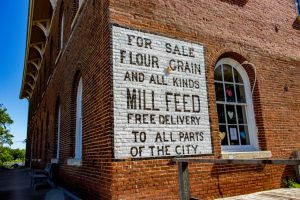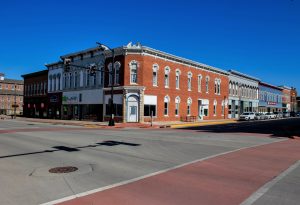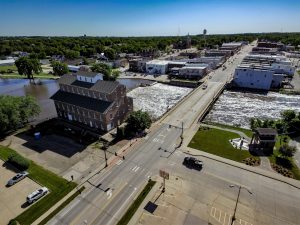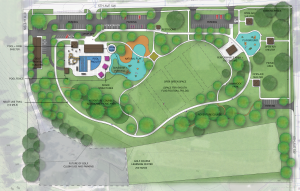“Celebrate our Spirit,” say the residents of Independence, Iowa (pop. 6,097). Yet, celebrating economic independence and resiliency has been a struggle for this community, located conveniently — and competitively — between three large metropolitan areas: Waterloo to the west by 26 miles, Cedar Rapids to the south by 39 miles, and Dubuque to the east by 68.
The Independence downtown district was once its economic hub, home to bustling businesses and ornate buildings — many listed on the National Register of Historic Places. While its bones retain much of the historic character, buildings need renovation, commerce is dwindling, and many business owners are nearing retirement with no succession plan — and no online presence, unable to compete in a thriving e-commerce era or with three retail markets within a one-hour drive.
Downtown is also bisected by the Wapsipinicon River and located within a FEMA-designated floodplain. This is detrimental because floodplain locations do not qualify for critical funding dollars such as Community Development Block Grants (CDBG) commonly utilized for renovation, infrastructure upgrades and revitalization projects such as this. The city is also restricted from building new businesses or structures within the floodplain.

Recognizing a list of challenges, Independence leaders sought a new direction for the future of the city’s downtown, with goals of fostering growth, development and resilience. MSA was asked to study and develop an Independence Downtown Plan to serve as a living guide to improve and attract business, spur commercial investment, incentivize long-range economic planning, attract young professionals and revitalize the downtown corridor.
Among many public engagement tools in the process, an ArcGIS crowdsourcing app was also used as an engagement tool. This GIS-driven application was custom configured for Independence and provided citizens with an online map and icons to geographically pinpoint opportunities, areas needing improvement, or community assets related to buildings and roads; ADA and multi-modal improvements; community assets and historical preservation.

While reviewing existing conditions in downtown Independence, MSA utilized Retail MarketPlace, a database identifying supply and demand gaps in retail sales and consumer spending developed by Esri. This helped the team analyze spending trends within 5-, 30-, and 45-minute drive times from Downtown Independence and determine what local demand exists, what unmet demand is going to neighboring retail markets and what amount in overall retail trade is being spent by residents outside the City of Independence — in this case, an estimated $15 million.
All of this data and public feedback informed the development of the Independence Downtown Plan document, with chapters dedicated to Urban Design (aesthetics, streetscaping and accessibility), a Revitalization Plan (flood zone challenges, recreational opportunities and ideas for improvements in four core sectors), and Action and Implementation Plan (goals-setting, action steps, budgetary and zoning impacts, and funding resources).
Since completion and adoption of the plan, multiple campaigns to restore historic buildings have commenced, the City has successfully pursued several Catalyst state grants to revitalize key buildings in the downtown, new owners have joined the downtown marketplace, and the community has a clear set of short-, medium- and long-range goals to continue improving and revitalizing the picturesque heart of their community.



